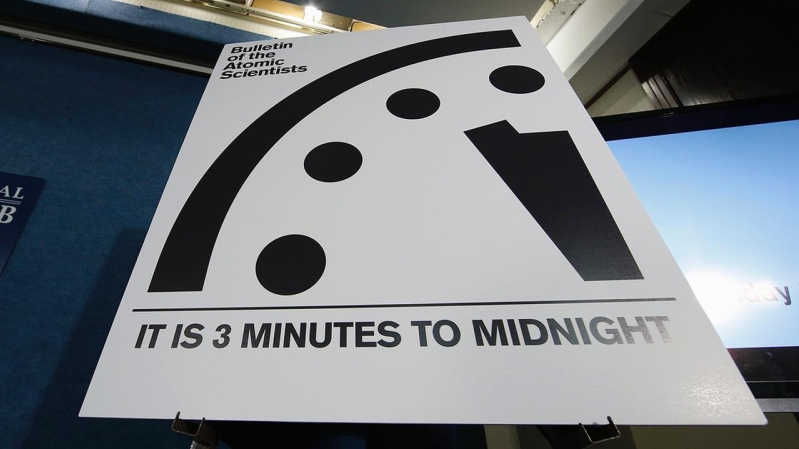
On Tuesday, the Bulletin of the Atomic Scientists announced that the Doomsday Clock stays the same at three minutes to midnight. This symbolic clock is widely recognized as an indicator for how close humanity is destroying the planet Earth. The group of scientists said the positive developments last year-- control in Iran's nuclear program and the historic agreement on climate change--are the reasons why the clock is unchanged.
Since January 2015, the clock has been set at 11:57 PM. However, despite these developments, the scientists said they are only "small bright spots in a darker world." The other areas of concern are the heightened tensions between Russia and United Sates, the increasing conflict in Syria and Ukraine, and the problems over the South China Sea, Reuters reported.
The current state of the clock is the closest has been to midnight since the Cold War during the 1980s. It was previously set five minutes to midnight.
Because of the unsolved global problems, scientists are not pleased that the Doomsday Clock remains the same. Lawrence M. Krauss of the Bulletin's Board of Directors said the decision is "not good news but an expression of grave concern."
The Paris climate agreement is promising, but the Earth's temperature is still increasing over pre-industrial levels, according to Bulletin's statement published in CNN.
However, all hope is not totally lost. The Bulletin said there are ways to move back the hands of the clock. Nuclear-armed-countires should significantly reduce their spending on nuclear weapons programs. Countries should also work together to totally ban the use of nuclear weapons. Moreover, feuding nations like Russia, China, United States, and North Korea should be open to better dialogues to resolve their conflicts.
The organization also warned the dangers of climate change. They stressed that people around the world should do their small contributions to reduce the green houses in the Earth's atmosphere.
The Bulletin of the Atomic Scientists is a journal that was created in 1945, after the bombings of Hiroshima and Nagasaki. Two years later, the Doomsday Clock was established. The clock, the journal's most famous contribution, acted as a way to inform the public about the harmful effects and dangers of nuclear war. As years go by, the journal's scope has expanded, encompassing other factors that could pose threats to humanity's global security.
Since its 70-year history, the clock has been updated for 22 times. The decision to move the hands of the clock comes from the Bulletin's Science and Security Board and Board of Directors-- a group that is composed of Nobel Prize winners.







